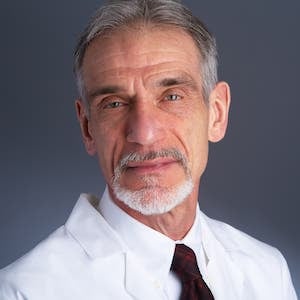Advancements in Respiratory Medicine: An Interview With Dr. Edward Cordasco

Respiratory medicine is continuously evolving, with new advancements taking shape to support progress and better outcomes every day. We recently discussed some of these advancements with Dr. Edward Cordasco, a Remington-Davis (RDI) board-certified physician with over 36 years of experience and specializations in critical care medicine and pulmonary disease.
Combination Vaccines for COPD Patients
As it stands today, various medical societies recommend that patients with chronic obstructive pulmonary disease (COPD) receive viral immunization for influenza, respiratory syncytial virus (RSV), and COVID-19 in addition to the bacterium pneumococcus. Research shows that influenza infections, for instance, are linked to a higher risk for adverse cardiovascular events, bacterial pneumonia, and respiratory failure in COPD patients.
However, generally speaking, patient compliance with vaccination recommendations is rather poor. Of the patients that qualify for vaccines based on their age and severe disease risk factors, only a fraction of that population will get vaccinated — 50% at best.
The potential emergence of combination antiviral vaccines that target influenza alongside other viruses could enhance patient vaccination acceptance. Rather than receiving three injections on an individual basis, a patient could receive their doses for influenza, RSV, and COVID-19 in a single shot.
The medical community would highly recommend combination vaccines, should they become available, for patients with COPD. With the convenience of being able to get one shot with multiple purposes, it’s probable that an advancement such as this would increase compliance and decrease preventable infection related to illness and death.
Considering the current explosion of influenza, in the years after COVID-19 isolation, finding ways to increase vaccination rates is critical for at-risk populations like COPD.
High-Resolution, Dynamic Scanning
The use of high-resolution CT scanning equipment is becoming the standard for chest imaging. With dynamic scanning incorporated into this same algorithm, scanners can now capture a much more detailed view of the airway anatomy and lung parenchyma.
At RDI, we see patients with respiratory health symptoms such as shortness of breath or wheezing. Yet when patients are evaluated in pulmonary function studies, they can come back with normal lung function measurements. Or, they may only have slight perturbations in lung function that can’t be classified into specific categories of respiratory diseases like COPD.
In pulmonary medicine cases like this, where patients have an issue but don’t directly fit into a category of obstructive lung disease, functional imaging of the chest can be beneficial. High-quality, dynamic imaging can play a role in defining abnormal areas of ventilation and perfusion. These results can speak to potential precursors for obstructive lung disease.
Integrating artificial intelligence within scanning equipment is apt to further improve our ability to diagnose disease earlier and potentially provide targeted treatment plans for patients.
It’s also likely that AI will help reduce radiation exposure. By reviewing the patient’s anatomy and perhaps functional physiology, AI could help identify the lowest radiation possible to get the quality of images needed.
The Promise of Precision Medicine
Going back 15 or 20 years ago, all COPD patients received the same therapy — typically bronchodilator therapy, a cornerstone of treatment for this patient population. But over time, the medical community has learned more about patient subpopulations and their response to medication. What they’ve found is that some of these patients respond best when bronchodilator therapy is paired with other add-on therapies.
Consider the case where a patient has elevated blood inflammatory markers (i.e., eosinophilia) that suggest a specific inflammatory response to their illness. When this type of inflammatory response is present, although not seen in many COPD patients, it’s suggested this patient subpopulation would respond well to the combination of bronchodilator therapy and inhaled steroids.
In other cases, COPD patients will have more of an inflammatory response to their disease that is akin to exacerbations from asthma. These patients can respond well to monoclonal antibodies.
New information is coming out in regards to how COPD patients respond to targeted therapies, and what the impact is on reducing their risk and mortality rates. As the Mayo Clinic reports, a triple therapy approach that includes inhaled corticosteroids (ICS) was found to reduce the risk of mortality in patients with symptomatic COPD.
 With a deeper insight into the pathology of diseases — insights that artificial intelligence will support — the more the medical community will be able to discern between different patient subpopulations and deliver specified treatments.
With a deeper insight into the pathology of diseases — insights that artificial intelligence will support — the more the medical community will be able to discern between different patient subpopulations and deliver specified treatments.
Thank you to Dr. Cordasco for his commentary on the latest respiratory medicine advancements. Having partnered with Remington-Davis on clinical research studies since 1992, he’s seen advancements like these take shape in the clinical trial setting. To learn more about working with RDI for your clinical trial management, connect with us.
